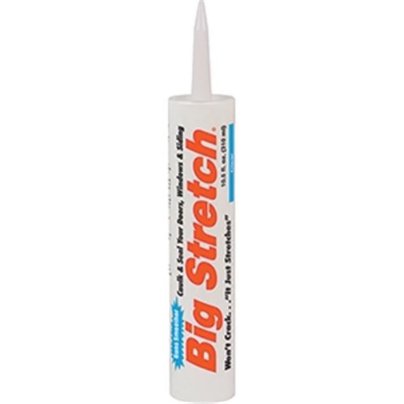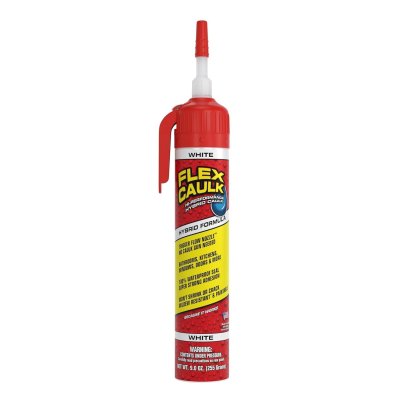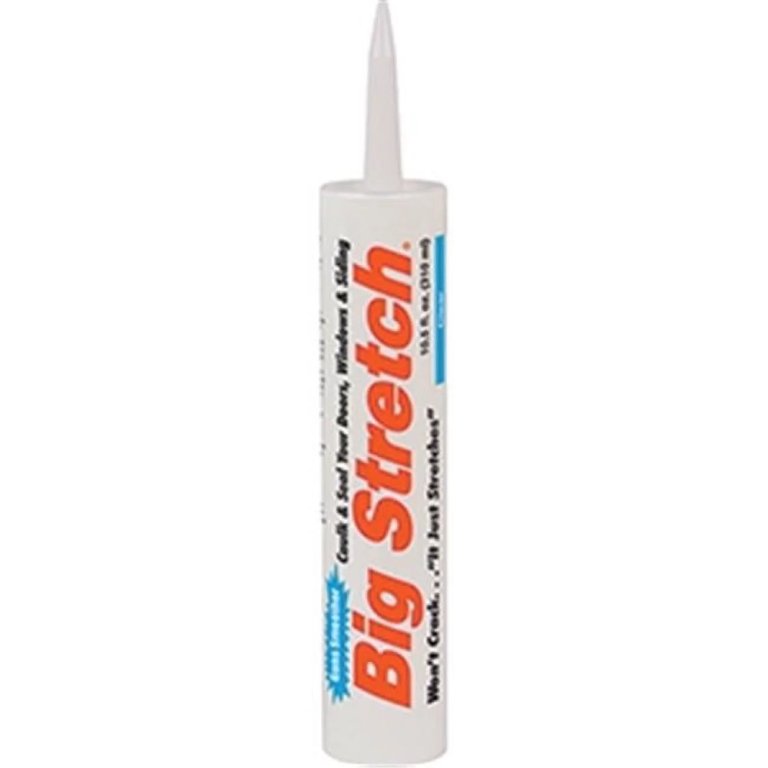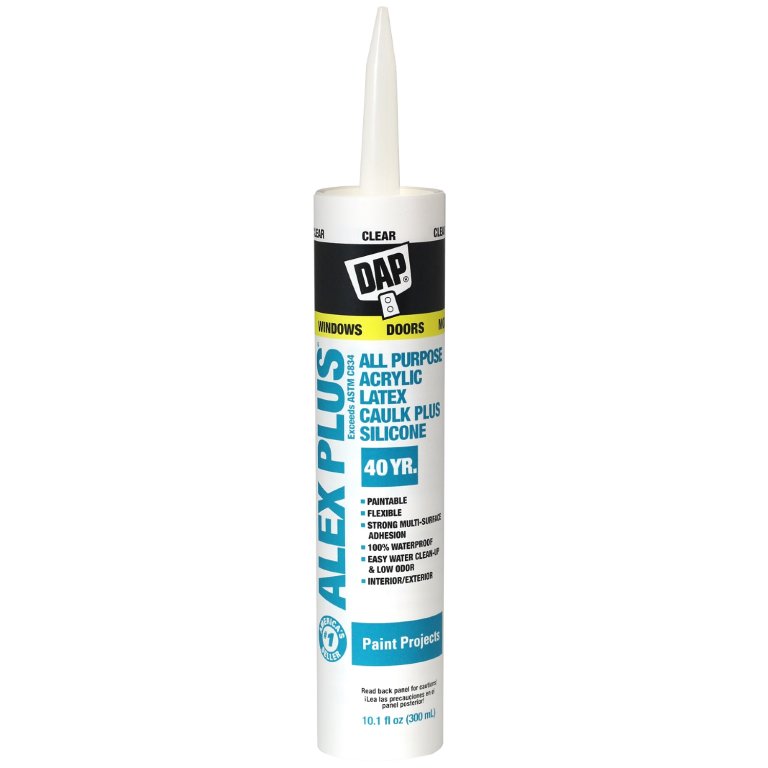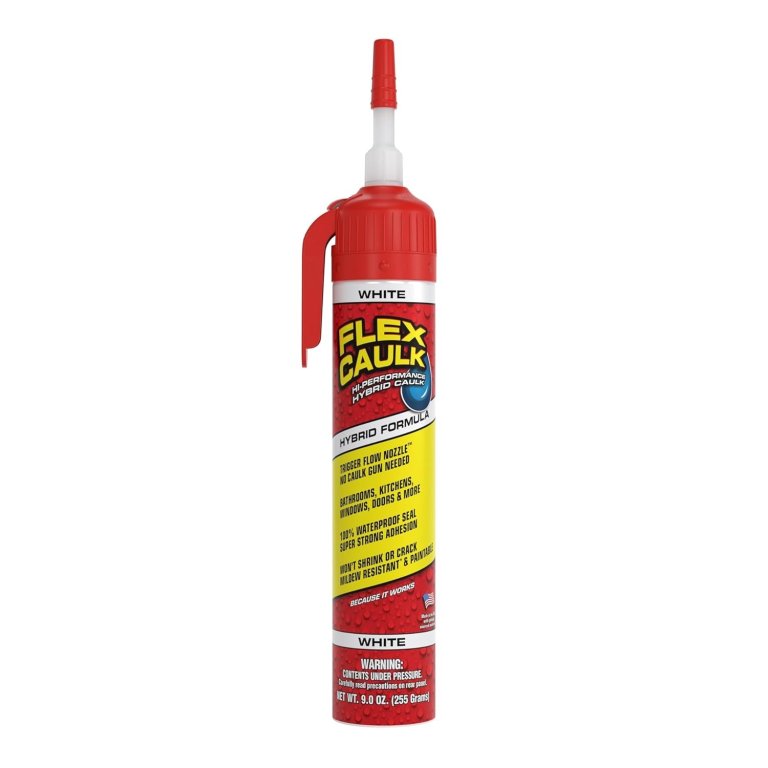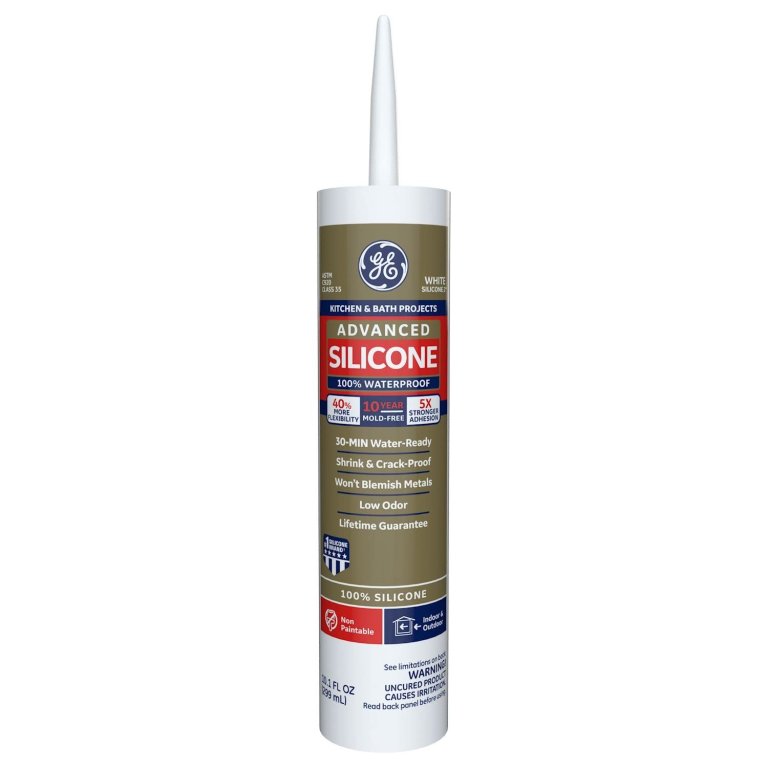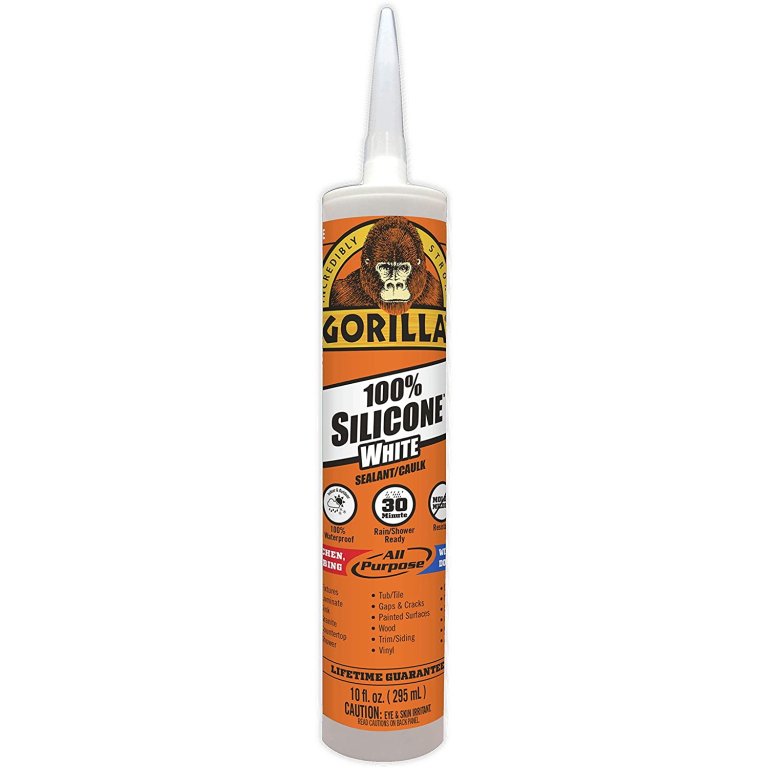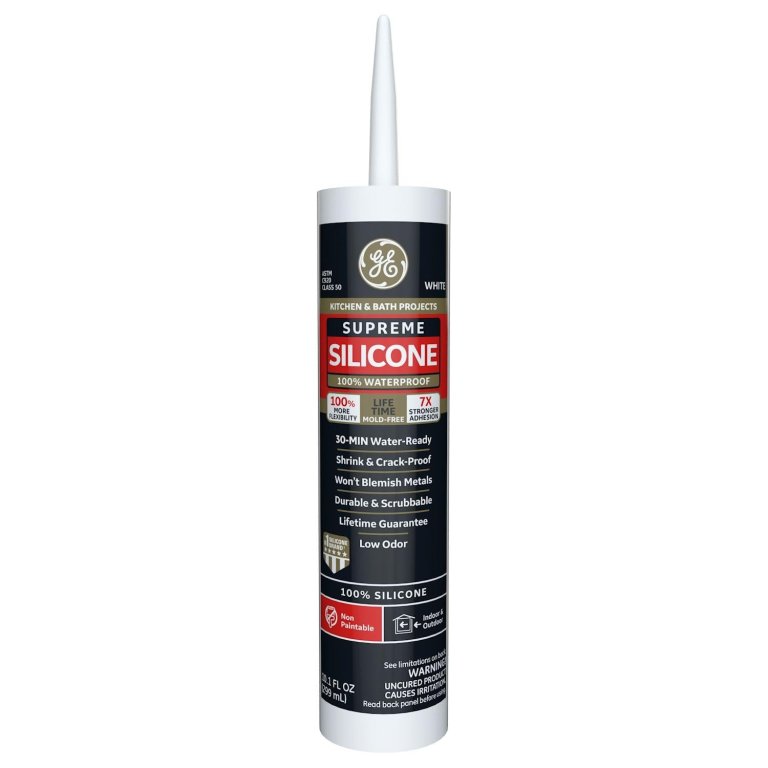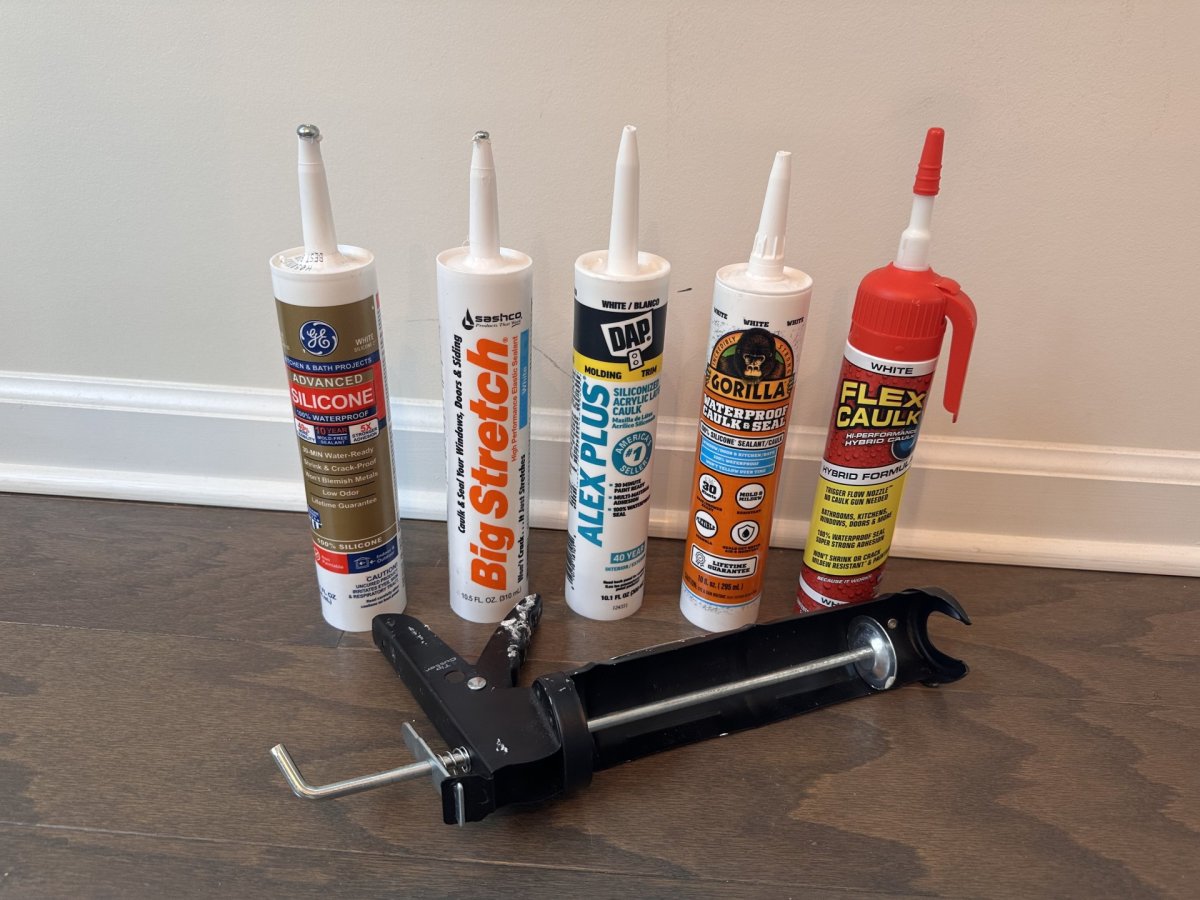
We may earn revenue from the products available on this page and participate in affiliate programs. Learn More ›
Many DIYers are familiar with running caulk around their bathroom fixtures, but did you know that it can also be used on baseboards? An effective gap filler, caulk creates a super-neat, professional finish and helps prevent insects from getting into the wall or liquid spills from seeping underneath it.
Several different types of caulk—but not all—are suitable for baseboards, which can make selecting the right product a challenge. In an effort to find the best product for caulking base molding, we tested five different kinds. We found that Sashco Big Stretch Latex Caulk, with its ability to cover wider gaps without cracking and a white finish that closely matches the color of baseboards, to be the best all-around option. Along with the five products we tested, we also selected two additional varieties of baseboard caulk based on our research.
Ahead, learn more about what to look for when shopping for the best caulk for baseboards and find out more about the products we tested.
- BEST OVERALL: Sashco Big Stretch Latex Caulk
↓Jump to Review - BEST BANG FOR THE BUCK: DAP Alex Plus All-Purpose Acrylic Latex Caulk
↓Jump to Review - BEST UPGRADE: Flex Caulk Hybrid Polymer Sealant
↓Jump to Review - BEST EASY-TO-APPLY: GE Advanced Silicone Caulk
↓Jump to Review - BEST WATERPROOF: Gorilla Waterproof Silicone Caulk & Seal
↓Jump to Review - MOST VERSATILE: GE Supreme Silicone Caulk for Kitchen & Bathroom
↓Jump to Review - BEST FOR LARGE GAPS: DAP Extreme Stretch White Acrylic Urethane Sealant
↓Jump to Review
Caulk for Baseboards Comparison Chart
| Type | Curing Time | Durability | |
| Sashco Big Stretch Latex Caulk | Acrylic latex | 30 minutes (tack-free); 4 to 5 days (fully cured) | Lifetime |
| DAP Alex Plus All-Purpose Acrylic Latex Caulk | Acrylic latex w/ silicone | 30 minutes (tack-free), 24 hours (fully cured) | 40 years |
| Flex Caulk Hybrid Polymer Sealant | Hybrid polymer | 10 minutes (tack-free), 24 hours (fully cured) | N/A |
| GE Advanced Silicone Caulk | Silicone | 30 minutes (water-ready); 24 hours (fully cured) | 10 years |
| Gorilla Waterproof Silicone Caulk & Seal | Silicone | 30 minutes (water-ready); 24 hours (fully cured) | Lifetime |
| GE Supreme Silicone Caulk for Kitchen & Bathroom | Silicone | 30 minutes (water-ready); 24 hours (fully cured) | Lifetime |
| DAP Extreme Stretch White Acrylic Urethane Sealant | Acrylic urethane elastomer | 2 hours (paint-ready); 24 hours (fully cured) | N/A |
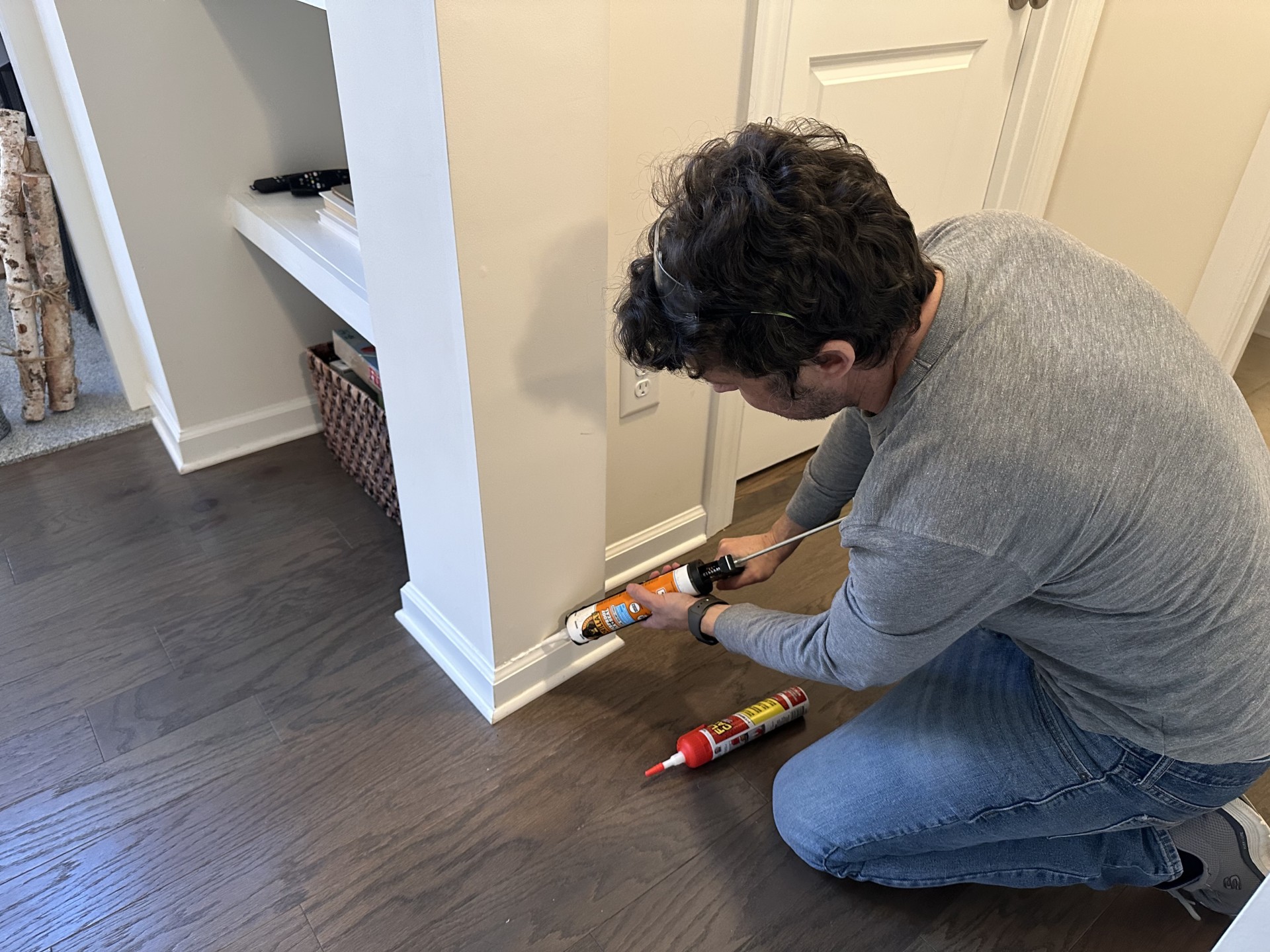
Our Top Picks
It’s time to look at some of the best caulk for baseboards currently on the market. The following recommendations provide an in-depth reference for the best caulk for baseboards in their respective categories.
Best Overall
Sashco Big Stretch Latex Caulk
What We Like
- Exceptional stretchability prevents cracks and gaps
- Closely matches baseboard finishes
- Manufactured in 13 colors, including wood-colored caulking, but also paintable
What We Don’t Like
- Isn’t waterproof or mold or mildew resistant
Specs
- Type Acrylic latex
- Curing time 30 minutes (tack-free); 4 to 5 days (fully cured)
- Durability Lifetime
Our Ratings: Ease of Use 4.5/5; Durability 5/5; Value 4.5/5
Homes old and new settle over time, causing gaps to form around baseboards, plumbing fixtures and other areas in a home. Thanks to its excellent gap-filling ability, Sashco’s Big Stretch acrylic latex caulk becomes invaluable in these situations as it can stretch up to 500 percent of its original size without splitting or cracking. We put this claim to the test, and Big Stretch largely lives up to it.
Big Stretch is easy to apply with a formula that’s somewhat thicker than other caulk types. Once fully cured, we put Big Stretch’s claims to the test by pulling the baseboard piece away from our section of test wall by 1/2 inch. As advertised, Big Stretch expanded to cover the gap without peeling away or cracking.
Along with its stretchability, we were also impressed with its versatile finish. While Big Stretch is paintable, you may not need to paint it at all. The caulk dries to a semi-gloss finish that closely matches the semi-gloss hue used on most baseboards, and it comes in 13 colors.
Unlike other formulas, Big Stretch is not waterproof and has minimal resistance to mold or mildew, so it should not be used for caulking the bathroom or kitchen. In fact, any humidity impacts its drying time, which can be as fast as 4 to 5 days but can take up to two weeks in humid conditions.
What our tester says: “Sashco Big Stretch checks the two most important boxes when it comes to a caulk for baseboards: It dries to a semi-gloss white finish that matches most trim, and it’s flexible enough not to crack or gap when your house inevitably settles.” —Tony Carrick, Product Reviews tester and writer
Get the Sashco caulk for baseboards at Lowe’s or Ace Hardware.
Best Bang For The Buck
DAP Alex Plus All-Purpose Acrylic Latex Caulk
What We Like
- Affordably priced
- Accepts paint well
- Thicker consistency covers wider gaps
What We Don’t Like
- Isn’t as flexible as other caulk formulas in our tests
Specs
- Type Acrylic latex with silicone
- Curing time 30 minutes (tack-free); 24 hours (fully cured)
- Durability 40 years
Our Ratings: Ease of Use 4/5; Durability 3/5; Value 4/5
DAP brand’s Alex Plus acrylic latex includes silicone for superior flexibility and waterproofing. It has excellent adhesion and, unlike 100 percent silicone caulk, it’s suitable for highly porous surfaces such as masonry, concrete, or brick, in addition to metal, glass, and wood. Plus, this acrylic caulk is also mold- and mildew-resistant.
DAP has a thicker consistency than other formulas, which allows it to cover slightly larger cracks. The thicker texture also makes it easier to control the bead size during application.
What really sets DAP apart and makes it an ideal caulk for baseboards is its finish. Unlike other formulas, which dry to a glossy finish, DAP dries to a flat white finish that easily accepts paint.
While we liked its paint-friendly finish, DAP is less flexible than the other caulks we tested and, hence, less durable. When we slightly pulled a piece of baseboard from our test wall base to simulate the natural expansion and contraction of wood baseboards and the settling of a home, small cracks formed in the caulk seam.
Get the DAP caulk for baseboards at Lowe’s, Ace Hardware, or The Home Depot.
Best Upgrade
Flex Caulk Hybrid Polymer Sealant
What We Like
- Great stretching and adhesion properties
- Doesn’t require a caulk gun for application
- Can adjust the flow on the tube
- Matches common baseboard color and finish
What We Don’t Like
- Costs twice as much as other caulk
- Can’t change tip opening size
Specs
- Type Hybrid polymer
- Curing time 10 minutes (tack-free); 24 hours (fully cured)
- Durability N/A
Our Ratings: Ease of Use 4.7/5; Durability 5/5; Value 4/5
Flex Caulk combines an easy-to-use design with tremendous stretching capabilities, making it an excellent sealant for baseboards for those willing to pay its steep price tag. It is the only caulk we tested that doesn’t require a caulk gun; instead, a built-in trigger releases the caulk.
We loved the performance of this caulk. It was the easiest caulk to apply because there’s no need for a caulk gun or to cut the tip of the tube. Flex caulk allows users to adjust its output by turning the nozzle, so regulating the flow of the caulk is easy. We only wish it had the option to adjust the nozzle opening, as we found that the bead came out a little thicker than we’d prefer.
Flex Caulk’s easy-to-use design is enhanced by its color. It dries to a semi-gloss white finish, so there’s no need to paint over it when caulking semi-gloss white baseboards and trim.
Flex Caulk claims to be able to stretch up to five times the bead width to prevent cracking, and it lived up to those claims. It didn’t crack or pull away from the wood surface, even when we created a 1/2-inch gap between our baseboard and our test wall. Flex Caulk’s only real downside is its price.
What our tester says: “Yes, Flex Caulk is twice as much as other caulk, but its design, quality of finish, and durability make it worth springing for.” —Tony Carrick, Product Reviews tester and writer
Get the Flex Caulk at Amazon or Lowe’s.
Best Easy To Apply
GE Advanced Silicone Caulk
What We Like
- Stretchability resists cracking and gaps
- Thin consistency makes it easy to apply
- Dries fairly quickly
What We Don’t Like
- Shiny, high-gloss finish isn’t ideal for baseboards
Specs
- Type Silicone
- Curing time 30 minutes (water-ready); 24 hours (fully cured)
- Durability 10 years
Our Ratings: Ease of Use 4.7/5; Durability 4/5; Value 4.5/5
GE’s Advanced Silicone caulk was exceptionally easy to use, thanks to its quick dry time, high flexibility, and smooth consistency.
Since it’s thinner than most formulas we tested, GE Advanced Silicone caulk doesn’t require hard trigger squeezes to push it out of the canister. That makes it easy to apply consistent pressure to the trigger, creating a consistent bead of caulk over longer runs. The caulk formed a waterproof skin on our test piece in about 30 minutes.
GE Advanced Silicone’s impressive flexibility claims held up during testing. The caulk held to the trim and base even when we pulled them a full quarter inch apart, a good indication that it would resist cracks and gaps as baseboards and move with changes in humidity and home settling.
Visually, the high-gloss appearance seems wet when dry and looks slightly translucent even after fully curing. While these qualities make it ideal for caulking around shiny porcelain bathroom fixtures, it may not match existing baseboard trim, and it’s unpaintable—so there’s no way to alter its appearance.
Get GE Advanced silicone caulk at Amazon, Lowe’s, or The Home Depot.
Best Waterproof
Gorilla Waterproof Silicone Caulk & Seal
What We Like
- Flexible formula resists cracks
- Waterproof and mold-resistant
- Thinner consistency makes it easy to apply
What We Don’t Like
- High-gloss finish is too shiny for some baseboards
Specs
- Type Silicone
- Curing time 30 minutes (water-ready), 24 hours (fully cured)
- Durability Lifetime
Our Ratings: Ease of Use 4.7/5; Durability 4/5; Value 5/5
Gorilla’s 100 percent silicone caulk and seal is a great option for caulking showers and bathtubs, as well as other environments that experience high humidity and water exposure, and works well on baseboards in areas that are exposed to water or dampness.
Gorilla caulk was easy to apply. The silicone formula comes out smoothly without requiring a death grip on the caulk gun’s trigger, which made it easier on our hands and allowed us to maintain an even bead of caulk during longer runs.
After laying a bead, Gorilla caulk smooths easily with a finger. Once dry, it adheres and flexes well. It didn’t pull away from our trim or board, nor did it crack when we pulled the two pieces slightly apart.
The caulk is solid white, closely matching the standard color for baseboards and trim. However, it does dry to a high-gloss finish. While this finish perfectly matches white porcelain, it contrasts with the semi-gloss finish of our baseboards. You can opt for a caulk with a flatter or paintable finish, but it likely won’t have the superior waterproof characteristics of Gorilla caulk.
Get the Gorilla caulk for baseboards at Amazon or Walmart.
More Great Options
The following two options are also ideal for sealing baseboards. We made both selections after researching more than two dozen different varieties.
Best Versatile
GE Supreme Silicone Caulk for Kitchen & Bathroom
What We Like
- Flexibility prevents cracks and gaps over time
- Great adhesive qualities
- Works on most materials
What We Don’t Like
- Not paintable
Specs
- Type Silicone
- Curing time 30 minutes (water-ready); 24 hours (fully cured)
- Durabity Lifetime
GE Supreme’s kitchen and bathroom caulk’s versatility makes it an ideal waterproof caulk to use on a variety of caulking projects around the home—far beyond baseboards alone. It has excellent adhesive qualities, so it works well on most materials, including aluminum, tile, brick, stone, cement board, drywall, wood, and masonry. It’s also 100 percent waterproof, so it seals around tubs and sinks. Plus, it dries in just 30 minutes. Along with its water resistance, GE Supreme has high adhesion and flexibility qualities, so it’s less likely to form cracks and gaps over time.
Get GE Supreme silicone caulk at Amazon, Lowe’s, or The Home Depot.
Best For Large Gaps
DAP Extreme Stretch White Acrylic Urethane Sealant
What We Like
- Can stretch to 6 times its width to fill gaps and prevent cracking
- Adheres to most surfaces
- Can be painted
What We Don’t Like
- Takes a little longer than other caulk to dry
Specs
- Type Acrylic urethane elastomer
- Curing time 2 hours (paint-ready); 24 hours (fully cured)
- Durability N/A
DAP’s Extreme stretch sealant’s tremendous flexibility is what makes it our favorite filler for baseboard gaps. With its ability to stretch over 600 percent of its original bead width, it’s less likely to crack or open up gaps between the baseboard and wall over time. The sealant will adhere to just about any surface. And since it’s paintable, coating it with whatever color matches the trim creates a perfect match. It does have a longer dry time than other brands at about 2 hours. It also works with metal, plastic, and porous materials and is completely waterproof, so it’s safe to use around doors and windows and in bathrooms and kitchens.
Get the DAP Extreme Stretch sealant at Amazon or The Home Depot.
Jump to Our Top Picks
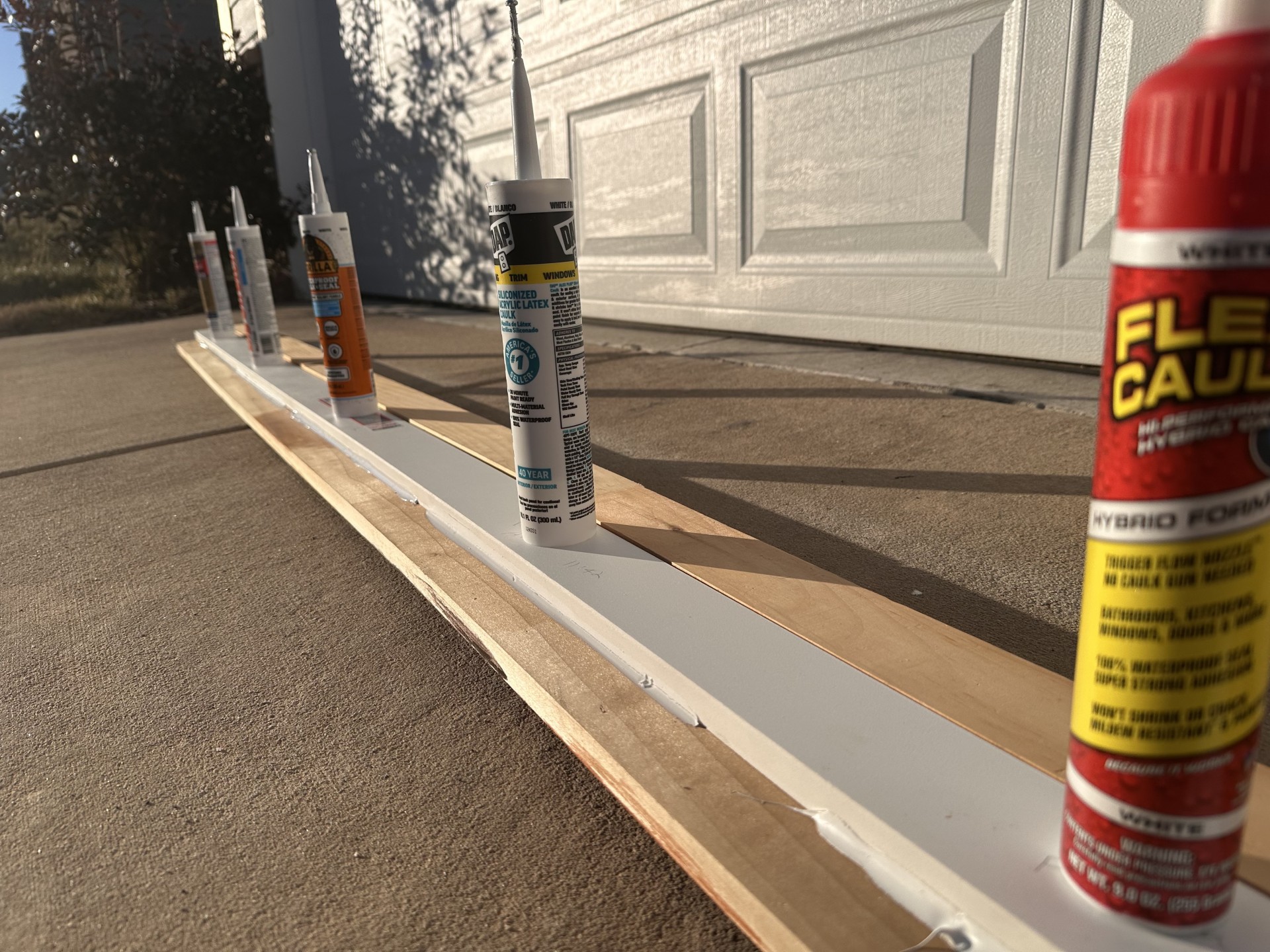
How We Chose and Tested the Best Caulk for Baseboards
| Products tested | 5 |
| Time spent testing | 2 Days |
| Tests performed | 3 |
| Price range | $5-$20 |
We used hands-on testing and research to select the best caulk for baseboards. To evaluate our options side-by-side, we attached a 10-foot section of baseboard to a piece of 2×6 lumber to simulate a wall. We then caulked the seam between the baseboard and the “wall” with each caulk in 2-foot sections.
During testing, we evaluated each caulk based on several factors. We assessed the application, noting how easy it was to maintain an even bead of caulk and smooth it out with a finger. We also considered dry time and appearance, evaluating how well each caulk matched the color and finish of the baseboard.
After each caulk was fully cured, we conducted a stretch test to simulate the natural movement of baseboards due to changes in humidity and house settling. We pulled each baseboard about 1/2 inch away from the attached board, noting whether or when the caulk cracked or pulled away.
For the two products we did not test, we researched their specs and evaluated user reviews before making our selections.
| Ease of Use | Durability | Value | |
| Sashco Big Stretch Latex Caulk | 4.5 | 5 | 4.5 |
| DAP Alex Plus All-Purpose Acrylic Latex Caulk | 4 | 3 | 4 |
| Flex Caulk Hybrid Polymer Sealant | 4.7 | 5 | 4 |
| GE Advanced Silicone Caulk | 4.7 | 4 | 4.5 |
| Gorilla Waterproof Silicone Caulk & Seal | 4.7 | 4 | 5 |
What to Consider When Choosing a Caulk for Baseboards
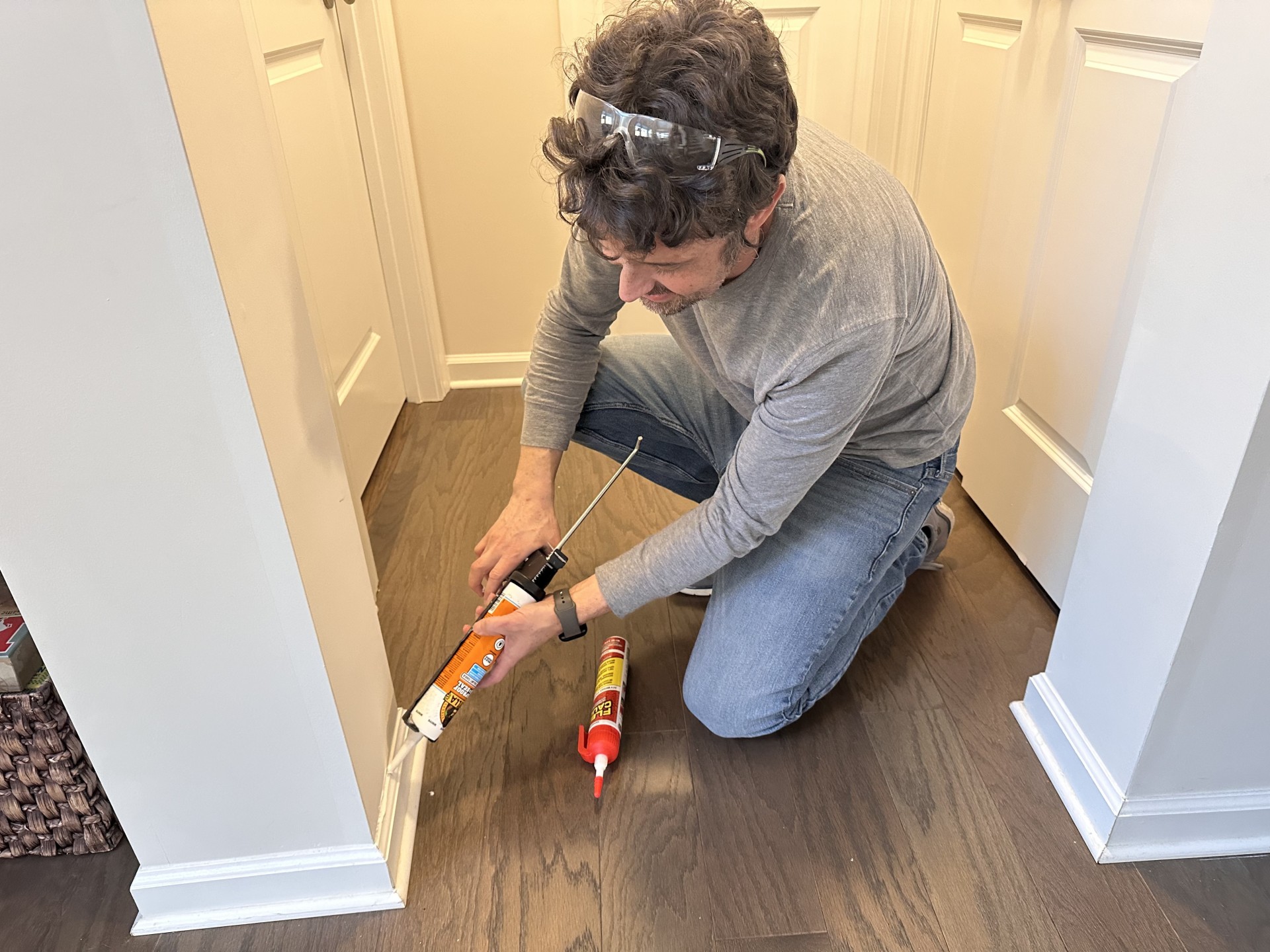
There is no such thing as a “general purpose” caulk. While the best exterior caulk also might be suitable for use on interior baseboards, it’s important to understand the properties of the selected tube. The following section explains the key features of different types of caulk so that you can confidently choose the correct formula for each location.
Types of Caulk
Many types of caulk are on the market, but not all are suitable for baseboards. Masonry caulk, for example, has a polyurethane base and often contains sand to add texture. Refractory caulk is heat resistant and frequently used around fireplaces. Butyl rubber caulk is highly flexible and works well to seal guttering. However, none of these combine the ease of application and smooth finish required for caulking baseboards.
The best caulk for baseboards falls into three categories: latex (also called polymer acrylic or acrylic latex), pure silicone, and latex with silicone, which seeks to combine the best of both worlds. Though caulk is fairly inexpensive, silicone generally costs a bit more.
Many caulk are also referred to as “elastomeric.” This is not a type, but rather an indication of the caulk’s elasticity. Caulking must remain flexible so it doesn’t get brittle or crack when dry. Pure silicone is naturally elastomeric, and although latex may be, it’s not always.
Quality and Durability
Caulking baseboards to floors and walls is not the type of job that must be redone regularly. Although a chance always occurs that accidental damage could require repair, if a quality formula is applied correctly, regular maintenance shouldn’t be necessary.
Cheap types of caulk from unknown brands are frequently available in discount stores. Since its quality cannot be trusted, it’s best to avoid it. Caulk from a reputable manufacturer should last a minimum of 25 years. While 40 years or more is not uncommon, some—often the pure silicone products—come with a lifetime guarantee. Whether it actually lasts that long depends on how well it’s applied, the type of baseboard material, and any movement of the walls. However, this type of guarantee demonstrates the manufacturer’s confidence in its product.
Pro Tip: If using white caulk on baseboards that won’t be painted, always check whether it’s resistant to yellowing. This is particularly important for pure silicone caulk, which cannot be painted.
Curing Time and Paintability
The length of time that caulk takes to dry varies considerably among the different types. Latex dries fastest; some brands cure in as little as 30 minutes. Fast drying time can be particularly useful if a few substantial gaps require a second application or if the baseboard and caulk will be painted. If the area needs to be used as quickly as possible, latex caulk is the optimal choice.
Pure silicone generally takes longer to cure. While some caulk is described as water-resistant after curing for a relatively short time, a full cure frequently takes 24 hours. Appearances can be deceptive, as caulk can seem dry to the touch fairly quickly because a skin forms on the outside. Pure silicone caulk typically takes longer to dry all the way through.
Latex caulk is often called “painter’s caulk,” which refers to the ease with which it can be colored. Pure silicone is not paintable, so any silicon-based product that is marketed as such is likely a combination of silicone and latex.
Gap Size and Adhesion
New walls should be straight and flat, so caulking the baseboard is the final finishing touch. However, in many older residences, the walls are almost never completely straight or flat, and even the floors may be slightly uneven. That’s why we always consider the gap-filling properties of a particular caulk and whether an area needs one or two applications. This is when the caulk’s elastomeric ability becomes important. Some caulk can fill gaps up to two inches wide but remain durable.
Baseboards can be made of natural wood, wood composite, PVC, or other manufactured substances, so also check how well a particular caulk adheres to the chosen material. Pure silicone and latex silicone products usually offer the most versatility.
Mold and Mildew Resistance
If the baseboards are in potentially damp or humid environments, such as bathrooms, kitchens, conservatories, and so on, ensure that the caulk is also waterproof. If it isn’t, the changing humidity conditions can cause the caulk to break down quickly. Pure silicone is 100 percent waterproof, and many latex-silicone hybrids are as well. Latex products vary, so more care is needed when checking their properties.
Mold and mildew resistance is also important when choosing a baseboard caulk for a humid environment. Although pure silicone is likely to give the greatest protection, don’t take it for granted.
Tips on How to Caulk Baseboards
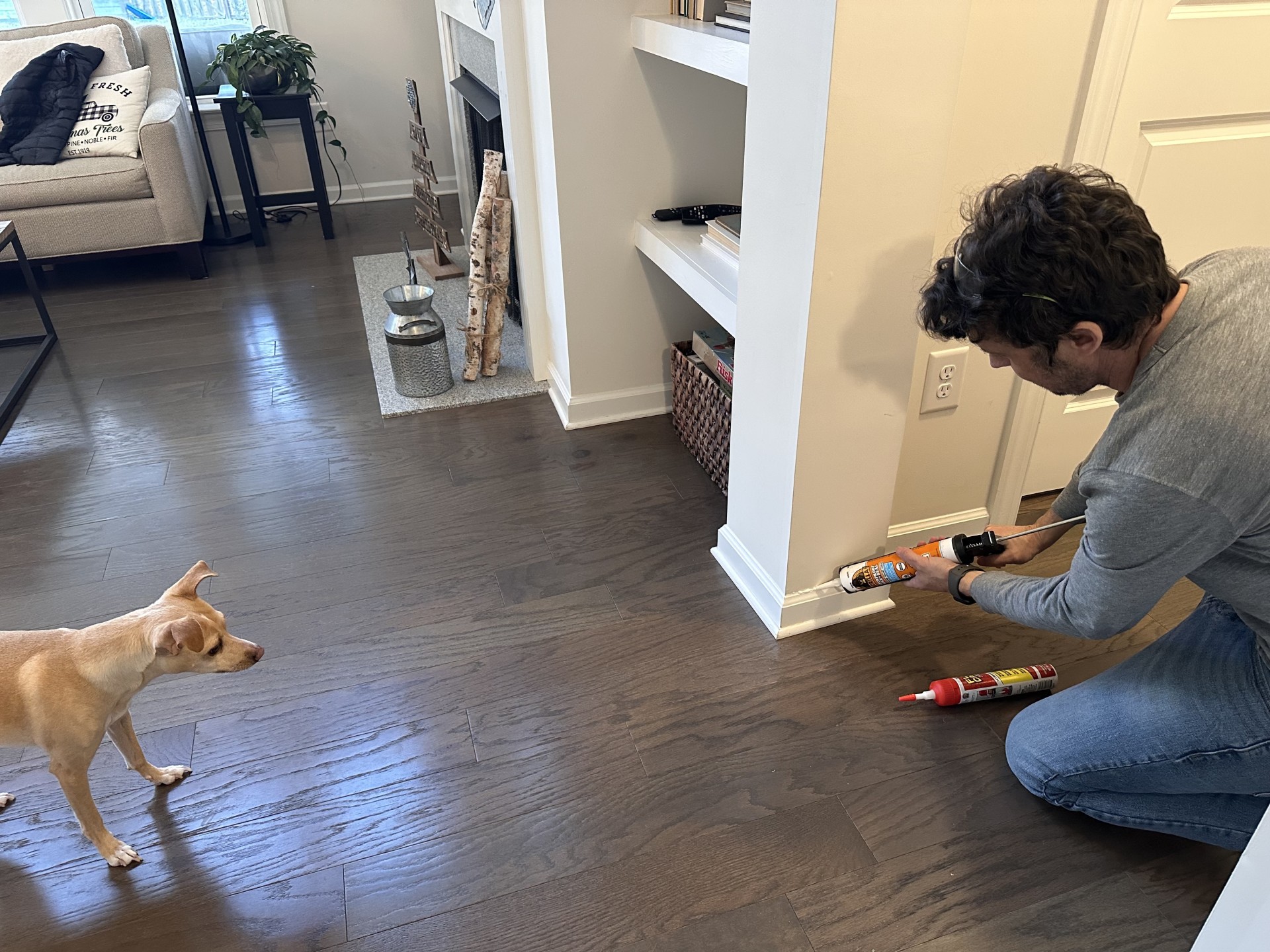
The following tips for caulking trim and baseboards provide good general guidance. However, the type of caulk chosen may also impact the application, so always follow the instructions on the caulk tube. These instructions may differ slightly from those provided here.
- Invest in a good caulk gun. A smooth trigger action provides better control over the flow of caulk, making the job quicker and requiring less cleanup.
- Vacuum or sweep the area around the baseboards to clean them. The area should be free of dust or grit, which can prevent the caulk from adhering properly.
- Although not essential, most experts recommend taping the wall or floor to prevent the caulk from smearing or spreading to unintended areas. Use low-tack painter’s tape, not masking tape.
- Cut the nozzle at 45 degrees, leaving an opening the appropriate size for the bead of caulk. Cut small at first and enlarge if necessary.
- You can run a test bead of caulk on a piece of paper or card to get a sense of how the product flows.
- Apply a smooth, continuous bead, controlling the speed to create a consistent thickness. Stopping and starting can produce lumps of excess caulk, so clear any obstacles before beginning to provide as much space to work as possible.
- After the caulk has been applied, it must be smoothed. While tools exist specifically for this purpose, using a wet finger is usually best. Keep a small bowl of warm water and a cloth handy to wipe any excess caulk off your fingers. As with the original caulking, try to maintain steady speed and pressure.
- Once satisfied with the finish, slowly remove the painter’s tape. It’s best to do this before the caulk dries to minimize the risk of lifting it.
The Advantages of Caulking Baseboards
Learning to caulk baseboards is not difficult, but the process does take time and patience. Most DIYers who make the effort reap big benefits.
- Caulked baseboards typically don’t show any unsightly gaps, giving the room a polished, professional finishing touch.
- Caulk prevents insects from invading the gap between the baseboard and the wall or floor. Once insects establish themselves, it can be very difficult and expensive to banish them. Removal typically involves toxic chemicals, so it’s best to stop them before they can get in.
- Caulk prevents dirt buildup between the baseboard and wall. It also keeps water from creeping in underneath the baseboard, which helps prevent mold, mildew, and rot from taking hold.
FAQs
The information supplied here should provide a thorough explanation of how different types of caulk work and how to apply them effectively. We’ve also highlighted some of the best caulk currently available for baseboards. In researching the topic, a few questions cropped up regularly, so we’ve provided answers below.
No. Each type of caulk is specifically formulated for the properties described and factory-mixed for optimum performance. Attempting to mix products will not only be messy and make them difficult to apply, but it will also likely reduce effectiveness, not improve it.
The process of caulking tile is the same as that for other floors, as described above in “Tips on How to Caulk Baseboards.” If the tile is in a damp area, a waterproof silicone or acrylic-and-silicone caulk with mold and mildew resistance should be used.
Yes, it’s a quick and efficient way to conceal unsightly gaps and prevent insects from infiltrating under baseboards and into the wall.
When caulking baseboard trim, use white caulk, as it will better match the baseboard’s color than clear caulk, which is more visible. If your baseboards aren’t white, make sure to use a paintable caulk. If you need help choosing the right paint brushes for trim, we’ve got that covered, too.
Whether or not you should paint baseboards first depends on the type of caulk you use. If you’re using a paintable caulk, then apply the caulk before painting your trim. If you’re using a white, non-paintable caulk that matches the color of the baseboards, hold off on caulking until after you paint.
You don’t have to caulk the baseboards, but there are several good reasons to do so. Caulking your baseboards creates a seal in the gap between the wall and baseboard, preventing drafts and keeping pests out. Caulking also creates a clean, professional-looking finish.
When installing the baseboard, they rest on top of the floor to eliminate any gap between the floor and the baseboard.
Meet the Tester
Tony Carrick is a freelance writer specializing in home improvement, landscaping, technology, home security, and design. His articles have been featured on such sites as Popular Mechanics, Futurism, SFGate, Pro Tools Review, and more. Tony has conducted rigorous product testing on everything from power tools to home security systems to backyard grills. With each review, his goal is to help readers determine whether a product meets their needs and if it is or isn’t worth its price tag.
